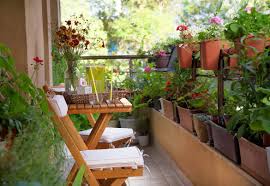How to Start an Indoor Garden in a Small Apartment
Living in a small apartment doesn’t mean you have to give up on gardening. With the right approach, you can transform even the tiniest space into a lush, thriving indoor garden. Whether you want fresh herbs, vibrant flowers, or air-purifying greens, this guide will walk you through everything you need to know to create a successful indoor garden in limited space.
Why Start an Indoor Garden in a Small Apartment?
Indoor gardening offers numerous benefits, especially for apartment dwellers:
- Grow fresh herbs and vegetables – Save money and enjoy organic produce year-round.
- Improve air quality – Plants naturally filter toxins and increase oxygen levels.
- Boost mental well-being – Gardening reduces stress and enhances mood.
- Maximize small spaces – Vertical gardens and compact planters make the most of limited room.
Choosing the Right Plants for Your Apartment
Select plants that thrive indoors and suit your space and lifestyle. Here are some excellent options:
1. Herbs (Basil, Mint, Parsley, Thyme)
- Why: Perfect for small kitchens, easy to grow, and useful for cooking.
- Space Needed: Small pots or hanging planters.
2. Leafy Greens (Lettuce, Spinach, Kale)
- Why: Fast-growing and ideal for small containers.
- Space Needed: Shallow trays or window boxes.
3. Compact Vegetables (Cherry Tomatoes, Peppers, Microgreens)
- Why: High yield in small spaces with proper care.
- Space Needed: Medium-sized pots with support for vining plants.
4. Low-Light Houseplants (Snake Plant, Pothos, ZZ Plant)
- Why: Thrive in low light and require minimal maintenance.
- Space Needed: Shelves, tabletops, or hanging baskets.
5. Succulents & Cacti (Aloe Vera, Echeveria, Haworthia)
- Why: Drought-tolerant and perfect for sunny windowsills.
- Space Needed: Small pots or terrariums.
Essential Supplies for an Apartment Indoor Garden
To get started, gather these basic supplies:
- Containers with drainage holes (pots, mason jars, or fabric grow bags)
- High-quality potting mix (avoid garden soil)
- Seeds or starter plants
- Watering can or spray bottle
- Grow lights (if natural light is limited)
- Small gardening tools (trowel, pruners, gloves)
- Fertilizer (organic or slow-release)
Step-by-Step Guide to Starting Your Indoor Garden
1. Assess Your Space and Light Conditions
- Sunny spots (South/West-facing windows): Ideal for herbs, vegetables, and succulents.
- Low-light areas (North-facing windows or corners): Best for snake plants, pothos, or ferns.
- No natural light? Use LED grow lights (energy-efficient and effective).
2. Choose the Right Containers
- Hanging planters – Save floor space.
- Vertical gardens – Use wall-mounted shelves or pocket planters.
- Stackable pots – Maximize vertical growth for herbs and strawberries.
- Windowsill planters – Perfect for small herbs and flowers.
3. Plant Your Garden
- Fill containers with potting mix, leaving an inch at the top.
- Plant seeds at the recommended depth or transplant seedlings.
- Water gently and place in the appropriate light conditions.
4. Water and Maintain Properly
- Check soil moisture – Stick your finger 1 inch deep; water if dry.
- Avoid overwatering – Most indoor plants prefer slightly dry soil over soggy roots.
- Mist humidity-loving plants (ferns, peace lilies) occasionally.
5. Provide Nutrients and Prune Regularly
- Fertilize every 4-6 weeks with a balanced liquid fertilizer.
- Trim dead leaves to encourage new growth.
- Rotate plants for even sunlight exposure.
Creative Space-Saving Ideas for Small Apartments
- Tiered Shelving – Use ladder shelves or floating shelves for multiple plants.
- Hanging Gardens – Macramé hangers or ceiling-mounted planters free up table space.
- Wall-Mounted Planters – Vertical plant walls or pegboard gardens add greenery without floor space.
- Windowsill Herb Garden – Compact and convenient for cooking.
- Under-Cabinet Lighting – Grow lights under shelves help plants thrive in dark kitchens.
Common Mistakes to Avoid
- Overcrowding plants – Give each plant enough space to grow.
- Ignoring drainage – Always use pots with holes to prevent root rot.
- Using poor-quality soil – Invest in well-draining potting mix.
- Neglecting pest control – Inspect plants regularly for bugs like spider mites.
Final Thoughts
Starting an indoor garden in a small apartment is easier than you think. With the right plants, containers, and care, you can enjoy fresh herbs, beautiful foliage, and even homegrown vegetables—no backyard required. Begin with a few easy-to-grow plants, and soon your apartment will feel like a green oasis.
